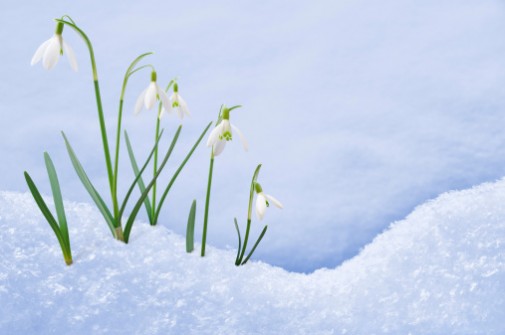Shaking off the winter blues

During a February in Chicago, we know spring is around the corner, but for many of us, it can’t arrive quickly enough. And this year’s arctic blasts and record snowfalls, may have you feeling the winter blues more than ever.
But what about those for whom the winter blues are a deeper, much more troubling condition?
According to the National Center for Biotechnology Information, an estimated six percent of Americans suffer not just from simple winter doldrums, but from the serious psychological condition known as seasonal affective disorder (SAD).
“SAD is a very real condition,” says Dr. Joanne May, psychologist at Advocate Illinois Masonic Medical Center in Chicago. “Some people may experience normal mood and energy levels through most of the year, but then feel depressed during the long winter months when there’s much less natural light. Where you live can have a lot to do with how you’re affected. SAD affects only about 1 percent of Florida, but an estimated 10 percent of the people living in New Hampshire and Alaska.”
Dr. May says that brain chemicals linked to mood—including serotonin, a natural antidepressant—are automatically triggered by natural sunlight. The reduced amount of natural sunlight during the shortened winter days causes serotonin levels to drop, causing some people depression, feelings of fatigue, cravings for carbohydrates and weight gain.
“While you’re waiting for the days to get a little longer with the coming of spring, many therapists suggest the use of light therapy to treat SAD,” Dr. May says. “Light therapy is thought to target brain chemicals that are linked to mood. Some find they start to feel better soon after starting light therapy.”
However, Dr. May warns that the therapy needs to be consistent until winter finally melts into spring. If the use is discontinued, the depression could come back.
She says there are three types of light therapy:
- Bright light treatment—You sit in front of a light box for 30 minutes or longer in, typically in the morning, to get an extra dose of light to stimulate serotonin production.
- Dawn simulation—Here, you arrange for a dim light to turn on in the morning while you’re sleeping. The light is programmed to get brighter over time, simulating a sunrise.
- Exposure to natural sunlight—Even though the sun may be scarce these days, you spending more time outside or using a computer-controlled exterior mirror to reflect sunlight into the windows of a home or office can give you an extra light dose.
Other treatments that may help reduce the symptoms of SAD include:
- Antidepressants, particularly selective serotonin reuptake inhibitors (SSRIs) have proven helpful. These medications can improve the balance of brain chemistry that affect mood.
- Cognitive behavioral therapy provides education about SAD and how to exert increased control over your various symptoms.
- Physical exercise has been shown to be an effective form of depression therapy, particularly when added to another form of treatment for SAD. Some studies have shown that patients exposed to 20 minutes of daily aerobic exercise who also spent 20 minutes under bright light treatment report their symptoms abate and they’re able to make a quick, sustained recovery.
“Though the winter may seem to be ending, the symptoms of SAD can last well into March and early April,” Dr. May says. “Don’t get frustrated with yourself if the winter is getting to you. Talk to your doctor or therapist and they can help you.”
Related Posts
Comments
One Comment
About the Author
health enews staff is a group of experienced writers from our Advocate Health Care and Aurora Health Care sites, which also includes freelance or intern writers.


















I always fine that exercise and a little sunshine is the best medicine for me. My favorite thing to do in the morning is open up all the blinds and let the sunshine in! Although, with a snowy winter like we’ve had this year, the sunshine can be hard to come by. 🙁